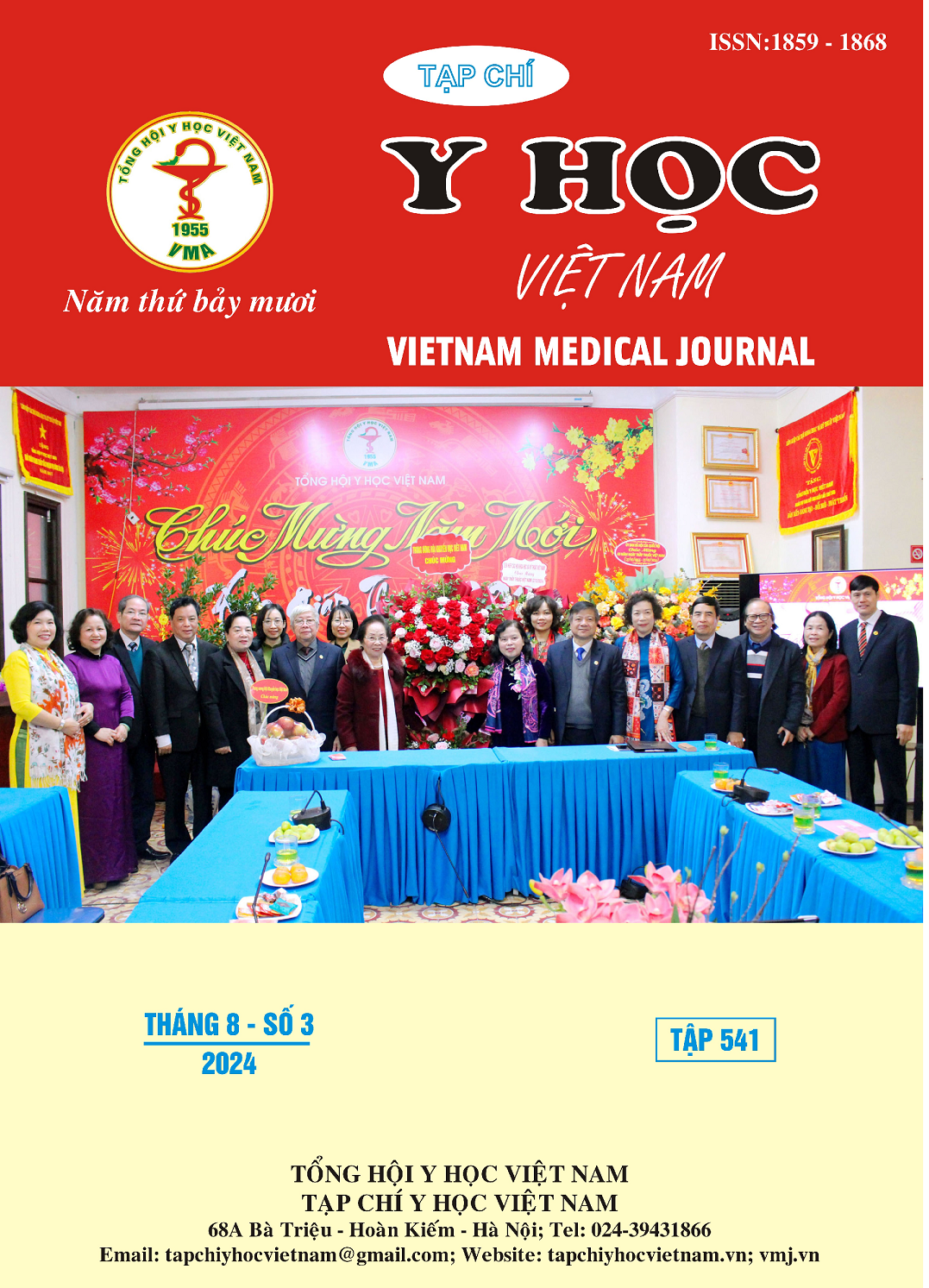THE MID-TERM OUTCOME OF ENDOVASCULAR INTERVENTION FOR TREATMENT OF DEEP VEIN THROMBOSIS IN THE LOWER EXTREMITY
Main Article Content
Abstract
The study aimed to evaluate the results of treatment in deep venous thrombosis with indications for endovascular intervention, performed at one center, with a 12-month follow-up period. There were 71 cases included from January 2018 to August 2022, which were received catheter directed thrombolysis with/without percutaneous thrombectomy, balloon dilation and stent placement for iliac vein reconstruction. The results showed that the technical success rate reached 97.2%, the thrombolysis rate reached 90,2%, with no serious complications. The treatment method has been shown to be effective in improving clinical symptoms, the patency rate after 12 months was 86.7%, the overall rate of post-thrombotic syndrome was 21.1%, and the majority of this syndrome were at mild level. Intravascular thrombolysis with/without aspiration, balloon angioplasty and stent placement to repair iliac vein occlusion lesions have been shown to be effective and safe, and can be applied in the treatment of venous thrombo-embolism.
Article Details
Keywords
DVT Deep venous thrombosis, PTS Post-thrombotic syndrome
References
2. Andrea T Obi, Thomas W Wakefield Medical treatment of acute deep venous thrombosis and pulmonary embolism. Handbook of Venous and Lymphatic Disorders: Guidelines of the American Venous Forum. CRC Press.
3. C. Broderick, L. Watson, M. P. Armon. Thrombolytic strategies versus standard anticoagulation for acute deep vein thrombosis of the lower limb. Cochrane Database Syst Rev, 2021; 1(1): CD002783. 10.1002/14651858. CD002783.pub5
4. H. Nakamura, H. Anzai, M. Kadotani. Less frequent post-thrombotic syndrome after successful catheter-directed thrombolysis for acute iliofemoral deep vein thrombosis. Cardiovasc Interv Ther, 2021; 36(2): 237-245. 10.1007/s12928- 020-00661-7
5. SR Kahn, C Kearon, JA Julian, B Mackinnon, MJ Kovacs, P Wells, et al. Predictors of the post‐thrombotic syndrome during long‐term treatment of proximal deep vein thrombosis. Journal of Thrombosis and Haemostasis, 2005; 3(4): 718-723.
6. C. D. Protack, A. M. Bakken, N. Patel, W. E. Saad, D. L. Waldman, M. G. Davies. Long-term outcomes of catheter directed thrombolysis for lower extremity deep venous thrombosis without prophylactic inferior vena cava filter placement. J Vasc Surg, 2007; 45(5): 992-7; discussion 997. 10.1016/j.jvs.2007.01.012
7. Peter Gloviczki AA or AA, ed. Book Handbook of venous and lymphatic disorders: guidelines of the American Venous Forum. number (only include if beyond first). CRC Press name; year of publication.
8. F. Aziz, A. J. Comerota. Quantity of residual thrombus after successful catheterdirected thrombolysis for iliofemoral deep venous thrombosis correlates with recurrence. Eur J Vasc Endovasc Surg, 2012; 44(2): 210-3. 10.1016/ j.ejvs.2012.04.016
9. D. Fleck, H. Albadawi, F. Shamoun, G. Knuttinen, S. Naidu, R. Oklu. Catheterdirected thrombolysis of deep vein thrombosis: literature review and practice considerations. Cardiovasc Diagn Ther, 2017; 7(Suppl 3): S228-S237. 10.21037/cdt.2017.09.15
10. M. K. W. Lichtenberg, S. Stahlhoff, K. Mlynczak, D. Golicki, P. Gagne, M. K. Razavi, et al. Endovascular mechanical thrombectomy versus thrombolysis in patients with iliofemoral deep vein thrombosis - a systematic review and metaanalysis. Vasa, 2021; 50(1): 59-67. 10.1024/0301-1526/a000875


